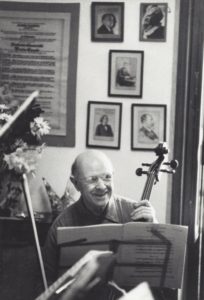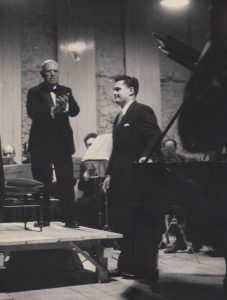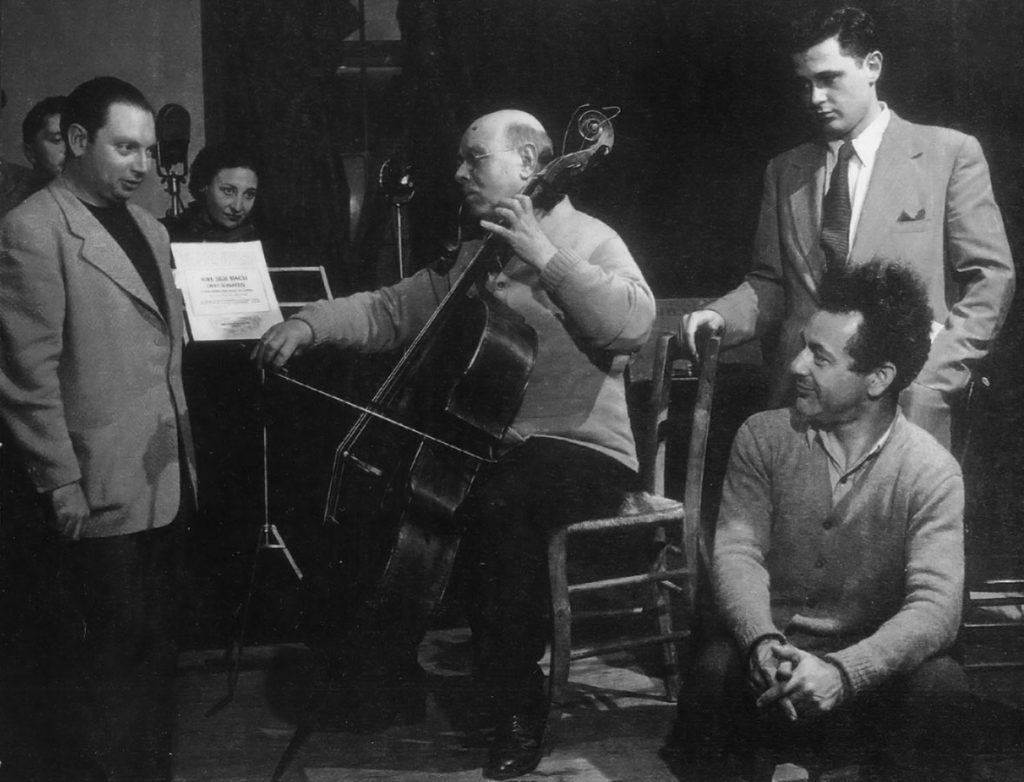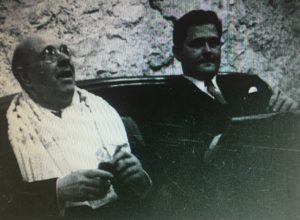CASALS, introduction
When Istomin learned that he was invited to participate in the Prades Festival to celebrate the two-hundredth anniversary of Bach’s death, he was both happy and proud, but also a little skeptical. Of course, Casals was a great man and a gigantic musician, and Istomin considered it a great honor to be around him. But how did he play the cello now? Casals had not performed in public for a very long time and he would soon be seventy-four years old. At the time, Istomin believed in instrumental progress. Jascha Heifetz played better than Kreisler and all the violinists who had preceded him. For the cello, he thought that Feuermann, who died tragically in 1942 at the age of 39, had probably surpassed his predecessors, including Casals – but that doubt was quickly dispelled!
For Istomin, the meeting with Casals was undoubtedly the most important event in his life as a musician and as a man. The articles in this chapter tell the story of their relationship and musical collaborations in detail. This introduction intends to focus more on their personal bonds and the portrait of Casals as a musician, which Istomin had the opportunity to present in various interviews.
Casals, who had never had children, loved him like a son, or a grandson. Between the two, there existed not only an immense affection, but also an openness and a lack of ceremony, that Casals had with no one else and which was a refreshing change from the excessive deference showed to him by so many people. Istomin did not hesitate to tease him. In his letters, he never addressed him as “Dear Maestro” which was the norm, nearly the rule, but wrote “Dear Pablo” or even “Dear old boy”. Aside from his immense respect, Istomin was also the only one who once confronted Casals and engaged in a violent dispute. This happened during the 1955 Prades Festival. Of course, they reconciled immediately!
Like the filial relationship they had in everyday life, Istomin sometimes tried to shake up Casals in music. The others, including Serkin, were too respectful to dare. Istomin could push Casals to take a faster tempo than he would have intended. Istomin was not only following him and “accompanying”, but also questioning him. It was especially in Brahms that their ideas tended to diverge. Casals found that Brahms was almost always played too fast. Istomin would later admit that Casals was right!
Casals made a decisive contribution towards clarifying Istomin’s musical ambition: to be a “musician virtuoso” who would associate the perfection of Heifetz and Toscanini with the sensitivity of Casals. Istomin wished to take up the challenge of uniting within himself qualities that seem difficult, if not impossible, to coexist in one and the same musician.
The richness of their exchanges went far beyond the scope of music. Politically and philosophically, they felt very close. They were both deeply attached to the same ideals of freedom and justice, convinced that they were men first, before being musicians.
Istomin was always totally available for Casals. He devoted himself body and soul to the organization of the Prades Festivals from 1953 to 1955, even engaging in fund raising or donating a number of his fees. He was instrumental in many of Casals’ actions in the United States, either with the government (notably with President Truman in 1950) or with the press (ensuring that an article written by Casals and entitled “I Have Not Changed My Mind’’ was published in the Saturday Review in 1953). He also acted as a conduit in the negotiations with Columbia. During the difficult period of Mrs. Capdevila’s illness and death in late 1954 and early 1955, Istomin was a crucial support for Casals, who was exhausted and discouraged, both musically and politically.
Istomin talks about Casals as a musician
“His quality of communication is the most intensively developed that I have experienced. He has the extraordinary ability to extrovert something, yet with such depth and with such a profundity of feeling and a breadth that is unique among instrumentalist I’ve heard. It’s through a deep natural intelligence, not necessarily an intellectual development, but the profoundest kind of natural intuition and general intelligence. Hearing him play a few times, I felt he reaches the furthest limits of the art of interpretation. The greatest heights of musical experience were given to me by Casals. It was through those experiences that I realized what it is all about.”
‘’I learned inadvertently, involuntarily by making music with him.’’
“After Busch, I had the feeling once again that I had been co-opted and welcomed into the small circle of the ‘chosen’, of the great musicians, and that I only had to work and develop the gifts that nature had given me. It was a great privilege, but also a great responsibility!”
“He didn’t give me any advice about my playing. He liked my playing, full stop. He did not find it necessary to make any comments to me. I was the one who was making comments to him: ‘Why are you making a rubato here?’ What an incredible cheek!”
“Casals, unlike Toscanini, has not concerned himself with attempting to prove that he is still young and invincible. He probes deep below the current strife in the world. He is concerned only in primary causes. For example, his playing is not such a memorable technical experience, but an exposition of the sum total of all music.”
.
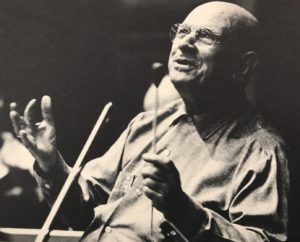 ‘’Contrary to what one might think, when you play with Casals, a trio, quintet or sonata, it is not at all professorial. He is just an artist who participates in the interpretation of the work, just like you. Of course, it’s something special to play with him, but he makes few if any comments.”
‘’Contrary to what one might think, when you play with Casals, a trio, quintet or sonata, it is not at all professorial. He is just an artist who participates in the interpretation of the work, just like you. Of course, it’s something special to play with him, but he makes few if any comments.”
When he conducts the festival orchestra, that is another matter. No one could call Casals a great conductor, but he is certainly a great leader. He is continually stopping the rehearsal to comment on the music. He is humble before the master who composed the work at hand. As he himself expressed it, ‘We are going to make some music here. All of us can learn together’. Believe me, all of us do. And a great deal of it comes from him.”
Istomin talks about Casals’ Prelude for piano
“Casals played it himself sometimes, for close friends. He played it for me, and I also remember a day when he played it at home in Prades, for Miecio, Sasha, Serkin and me. He said that it was a very modest work, his homage to great composers. In fact, this prelude is very touching, a little anachronistic of course, but Casals was a 19th century man, he was almost forty years old in 1914. It’s very personal, a little Catalan, a bit like Fauré.
I learned it for the recital I gave in Prades in 1965. I hadn’t been there in ten years. Then I took it up again in 1991 for the concert in tribute to Mieczyslaw Horszowski in Philadelphia. We celebrated the 50th anniversary of his presence at the Curtis, and his 100th birthday was approaching. Miecio had asked his former students (including Seymour Lipkin, Richard Goode and Peter Serkin) to play something unusual. I later played this Prelude very regularly in my recitals for several years, always with a great deal of emotion.”
Casals. Prelude for Piano (1943). Eugene Istomin. Recorded live at the Théâtre des Champs-Elysées on November 2, 1993.
Audio Player
